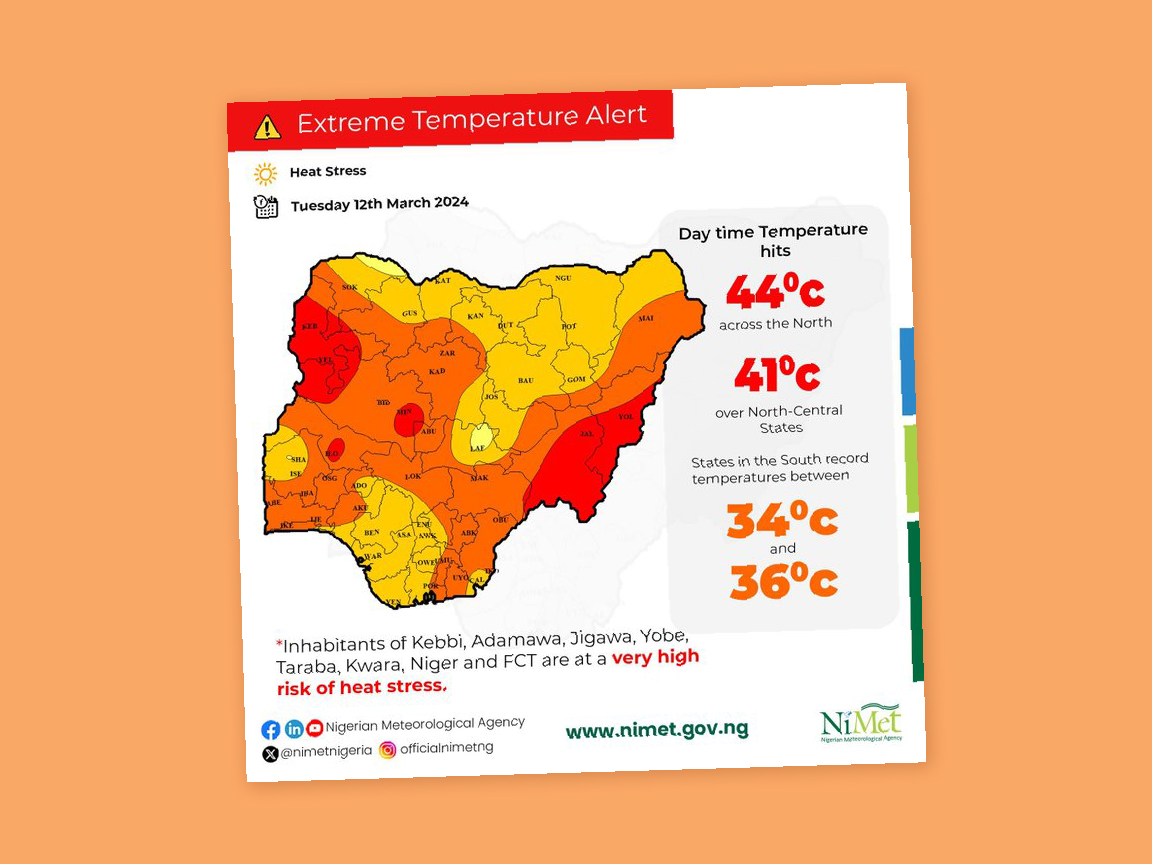
West African heatwave: high humidity made 40°C feel like 50°C

By the Climate Centre
The Nigerian Meteorological Agency (NiMet) was last week again warning of dangerous extreme heat, with temperatures as high as 44°C in the north of the country (photo); even in the coolest southern states, temperatures were in the mid-thirties Celsius.
This comes after a regionwide heatwave last month which World Weather Attribution scientists said today was made ten times more likely by human-caused climate change.
The new WWA study also found that if the planet warms to 2°C above pre-industrial levels, “West Africa will experience similar heatwaves about once every two years.”
Developing heat action plans in a region that currently lacks them will help protect vulnerable people from dangerous heatwaves, the researchers say.
The mid-February heat in West Africa was accompanied by high humidity, which made 40°C feel like 50°C and is more dangerous still for vulnerable groups like the very young, the elderly, and pregnant women.
Warnings were issued by met services in Ghana and Nigeria, but regionwide the capacity for warning and planning for extreme heat is very limited, they add.
Wasiu Adeniyi Ibrahim, NiMet forecasting chief, said today that the February heatwave was unseasonally early “meaning many people wouldn’t have been acclimatised … It is clear climate change is bringing more and more dangerously hot days to West Africa.
“With every fraction of a degree of global warming, heatwaves like the one we experienced in February in West Africa will become even hotter.”
‘Unlike storms, fires or droughts, heatwaves don’t leave an evident trail of destruction’
The analysis looked at a five-day index for an area where the heat was most extreme, including Nigeria, Benin, Togo, Ghana, Côte d’Ivoire, Liberia, Sierra Leone, and parts of Guinea and Cameroon.
Last month was the hottest February on record globally and the ninth consecutive month that a monthly record was broken.
The Climate Centre’s Maja Vahlberg said today: “Many people still don’t appreciate the dangers of heat – unlike storms, fires or droughts, heatwaves don’t leave an evident trail of destruction.
“But they can be deadly for the elderly, people with existing health conditions and outdoor workers.“
But she added: “Simple measures like awareness campaigns and warning systems can save thousands of lives during heatwaves.”
Research in Ghana in 2022, supported by the American Red Cross and the Global Disaster Preparedness Centre, found that health risks of extreme heat hinged not only on exposure but were also on related to behaviour, which in turn is often related to perceived risk.
Extreme heat was described by study interviewees as “one of their biggest climate change issues through their personal experience and its effects on their health and livelihoods”.
But structural and economic barriers pushed coping mechanisms such as electric fans, air conditioners, power, and a good supply of drinking water out of reach for some, making them more vulnerable; the design of buildings and windows was also identified as key to people’s ability to withstand heat.
Nigerian meteorologists were last week again warning of dangerous extreme heat, with temperatures as high as 44°C in the north of the country, after one episode of dangerous heat last month. (Image: NiMet)